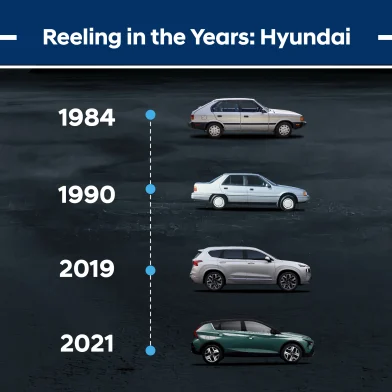The Evolution of Hyundai Car Design – Since its inception in 1967, Hyundai Motor Company has carved a remarkable path in the global automotive industry. Initially founded as a small-scale manufacturer focused on affordable vehicles for the Korean market, Hyundai has evolved into a powerhouse, known for its innovative designs, cutting-edge technology, and commitment to quality. This article explores the fascinating evolution of Hyundai car design over the decades, highlighting key milestones, influential models, and the strategic shifts that have shaped its identity in the competitive world of automobile manufacturing.
Origins and Early Years (1960s-1980s)
Hyundai’s journey began in 1967 under the vision of Chung Ju-yung, who aimed to transform Korea’s industrial landscape through automobile manufacturing. In its early years, Hyundai produced licensed versions of Ford and Mitsubishi models, gradually building expertise and infrastructure. The first significant milestone came with the introduction of the Hyundai Pony in 1975, Korea’s first mass-produced car. Designed in collaboration with Giorgio Giugiaro of ItalDesign, the Pony marked Hyundai’s entry into the global market and established a foundation for future design endeavors.
Also Read : Demystifying the Hyundai Design Process
Expansion and Technological Advancements (1990s)
The 1990s witnessed Hyundai’s rapid expansion and technological advancements. The company focused on refining its design language to appeal to broader international audiences while embracing new manufacturing techniques and quality control measures. Models like the Hyundai Sonata and Elantra showcased a shift towards more contemporary styling, integrating aerodynamic principles and ergonomic interiors. This decade also marked Hyundai’s commitment to environmental sustainability with the introduction of hybrid and fuel-efficient models, reflecting global automotive trends.
Design Renaissance and Global Recognition (2000s)
The 2000s signaled a design renaissance for Hyundai, driven by the appointment of Peter Schreyer as Chief Design Officer in 2006. Schreyer, renowned for his work with Audi and Volkswagen, brought a fresh perspective to Hyundai’s design philosophy, emphasizing fluidic sculpture and a harmonious blend of aesthetics and functionality. The Hyundai Genesis and Sonata NF exemplified this new direction, featuring bold lines, sophisticated detailing, and upscale interiors that challenged established perceptions of the brand.
Innovation and Sustainability (2010s)
In the 2010s, Hyundai continued to push boundaries with an emphasis on innovation and sustainability. The introduction of the Hyundai Ioniq, the world’s first vehicle to offer three distinct electrified powertrains (hybrid, plug-in hybrid, and electric), underscored Hyundai’s commitment to eco-friendly mobility solutions. Design-wise, Hyundai embraced the “Sensuous Sportiness” design language, characterized by sensuous lines, dynamic proportions, and a focus on emotional appeal. Models like the Hyundai Kona and Palisade showcased this evolution, combining versatility with striking aesthetics.
Present Day: Design Identity and Future Directions
Today, Hyundai stands at the forefront of automotive design, celebrated for its distinctive identity and forward-thinking approach. The launch of the Hyundai Prophecy concept car exemplifies Hyundai’s vision for future mobility, integrating autonomous driving capabilities with a seamless, minimalist design aesthetic. Looking ahead, Hyundai continues to explore new frontiers in design, leveraging advanced technologies such as augmented reality and artificial intelligence to create immersive, personalized driving experiences.
Conclusion
The evolution of Hyundai car design is a testament to the company’s resilience, innovation, and unwavering commitment to excellence. From humble beginnings with the Hyundai Pony to pioneering sustainable mobility solutions and visionary concept cars, Hyundai has continually redefined industry standards and captivated global audiences. As Hyundai embarks on its next chapter of innovation, one thing remains clear: its legacy of transformative design will continue to inspire and shape the future of automotive engineering for years to come.
References
This comprehensive exploration of Hyundai’s design evolution provides a deep dive into how a company transformed from a regional player to a global automotive leader, continually pushing the boundaries of design and innovation.
Originally posted 2024-06-25 03:57:17.
